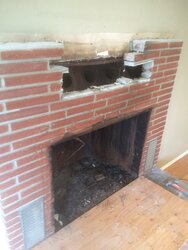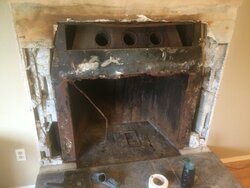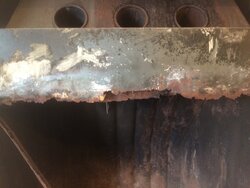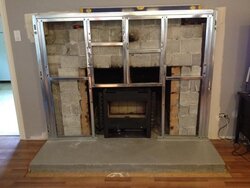I am in the process of getting ready to install an insert into and old Heatilator fireplace. The old brickwork was falling apart so I removed most of the brick surround. Now comes the fun part of trying to put it back together so I wont burn down my home.
Can I rebuild the surround with steel studs covered in durock and some sort of tile or stone? I would also like to shrink down the opening of the fireplace slightly to match the new insert better. I will also be covering up the old Heatilator vents and filling them the best I can with some Rockwool. The front of the Heatilator is also rusted through, will the be an issue?
I am planning on getting a Lopi Republic 1250i or the Lopi Answer. I am also open to suggestions I am looking for something close to a flush mount unit.
Here are some photos of what I am working with and an additional photo of what I was thinking of doing. Sorry if this is not formatted correctly and thanks for taking a look. Any advise would be greatly appreciated.
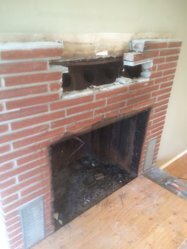
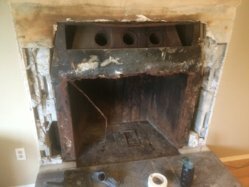
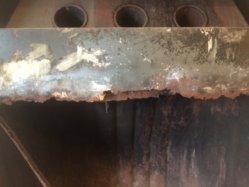
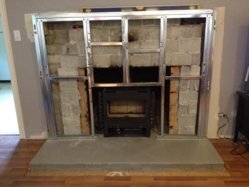
Can I rebuild the surround with steel studs covered in durock and some sort of tile or stone? I would also like to shrink down the opening of the fireplace slightly to match the new insert better. I will also be covering up the old Heatilator vents and filling them the best I can with some Rockwool. The front of the Heatilator is also rusted through, will the be an issue?
I am planning on getting a Lopi Republic 1250i or the Lopi Answer. I am also open to suggestions I am looking for something close to a flush mount unit.
Here are some photos of what I am working with and an additional photo of what I was thinking of doing. Sorry if this is not formatted correctly and thanks for taking a look. Any advise would be greatly appreciated.






